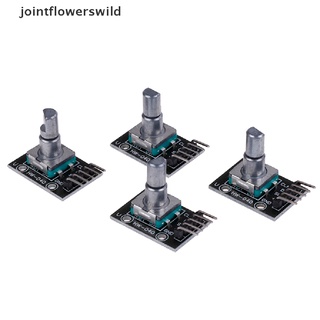Vender New Stock 4Pcs Rotary encoder module brick sensor development for arduino KY-040 Hot al mejor precio
0
calificaciones
2734 CLP
| Se envía desde |
|---|
Descripción del producto
Operating voltage: 5V
Number of pulses: 20
Packaging includes: 4Pcs module
The rotary encoder can count the number of pulses output in the forward and reverse directions by rotation, and the rotation count is not like the potentiometer. This rotation count is not limited. With the key on the rotary encoder, you can reset to the initial state, that is, counting from 0.
Working principle:
An incremental encoder is a rotary sensor that converts a rotary displacement into a series of digital pulse signals. These pulses are used to control the angular displacement. The conversion of the angular displacement in the Eltra encoder uses the principle of photoelectric scanning. The reading system is based on the rotation of the radial indexing disc (code disc) consisting of alternating light transmission windows and opacifying windows, and is irradiated vertically by an infrared light source, and the image of the code is projected onto the receiver surface The The receiver is covered with a layer of diffraction grating, which has the same window width as the encoder. The work of the receiver is to feel the changes that occur when the disc rotates, and then convert the light changes to the corresponding electrical changes. And then the low level signal to a higher level, and produce no interference with the square pulse, which must be used to deal with electronic circuits. The reading system usually uses a differential mode, which compares the two signals with the same waveform but with a phase difference of 180 ° in order to improve the quality and stability of the output signal. The readings are formed on the basis of the difference between the two signals, thus eliminating the interference.
Comparar

Shkas 4Pcs Rotary encoder module brick sensor development for arduino KY-040 Super
0
calificaciones
3102 CLP

Ctyf 4Pcs Rotary encoder module brick sensor development for arduino KY-040 Fine
0
calificaciones
2775 CLP
![[seivany] KY-040 Rotary Encoder Module Brick Sensor Development Board For Arduino](https://clshop.nghiatu.com/images/cl/175951188f407c8b8b764e901992e59d-small.jpg)
[seivany] KY-040 Rotary Encoder Module Brick Sensor Development Board For Arduino
0
calificaciones
2809 CLP







